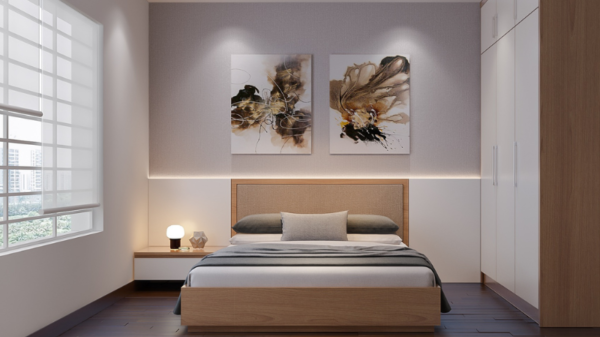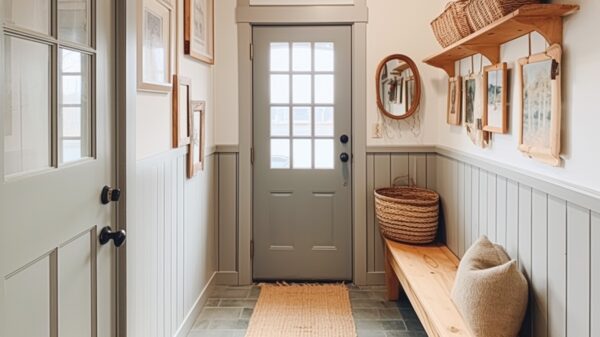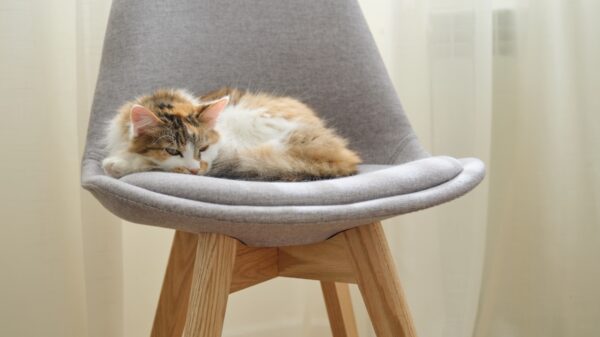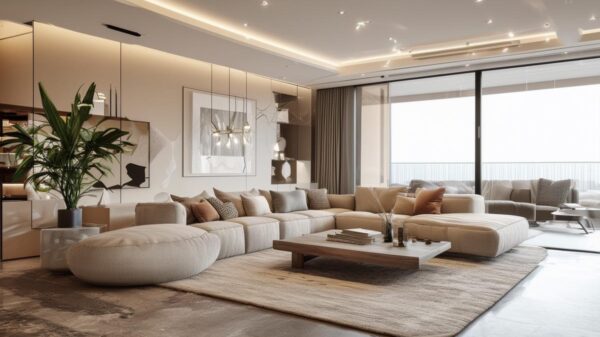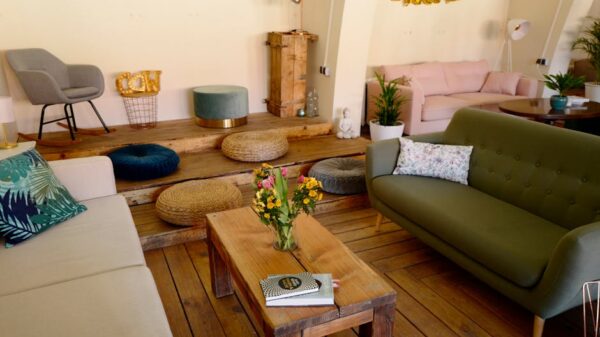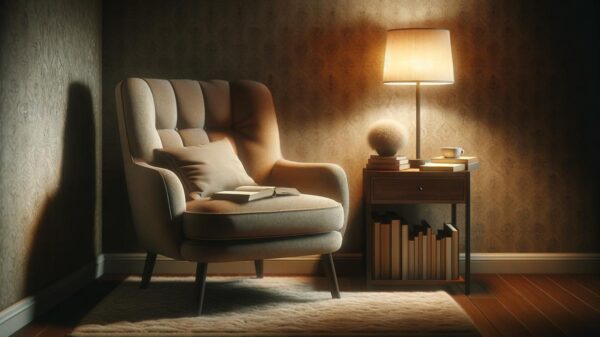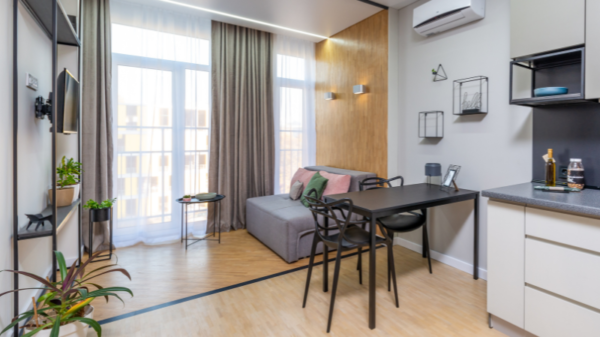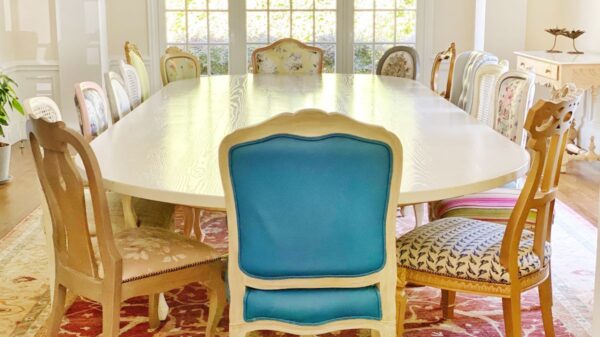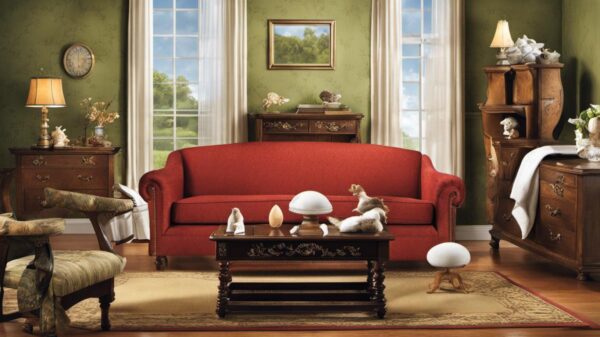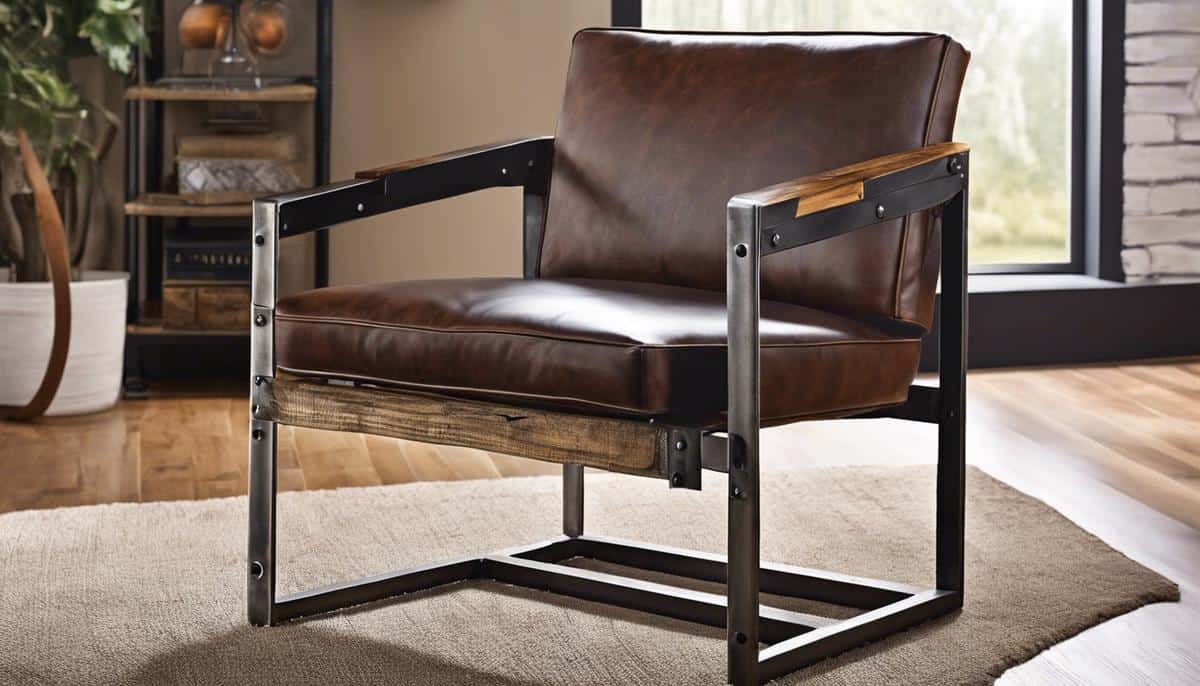Industrial Style Furniture: Essential Guide
The industrial design movement, a narrative of utility and expression born in the early 20th century, has left an indelible mark on the way we conceptualize and inhabit our living spaces. This essential guide to industrial style furniture will delve into the rich tapestry of its origins, the stark functionalism of warehouses and factories informs an aesthetic that has seamlessly transitioned into the realm of home decor. Industrial-style furniture, characterized by its raw materials and unrefined finishes, invites us to explore the confluence of history and modernity, durability and design. It’s a narrative shaped by the very bones of industrial efficiency, repurposed into the sinews of contemporary living — a testament to the enduring legacy of a style that continues to evolve and captivate our imaginations.
History and Evolution of Industrial Furniture
The Rustic Charm of Industrial Style Furniture
Ever wondered how that cool, edgy furniture featuring raw wood and exposed metal became all the rage? Let’s dive into the fascinating history of industrial style furniture, which has become a favorite among people who love a blend of raw simplicity and functional design in their living spaces.
It all started during the Industrial Revolution in the late 1700s. Back then, factories and warehouses were filled with sturdy furniture made to withstand the harsh conditions of industrial work. These pieces were not about looks; they were all about strength, durability, and utility. They featured solid raw wood and strong metal components, often with a weathered finish that came naturally with heavy use.
As time went on, these factories and warehouses became old and unused, and that’s when the magic happened. Creative minds saw beauty in the discarded workbenches, shelving units, and lockers. They recognized the potential of these tough and enduring pieces to be used in homes and offices. It wasn’t just about repurposing; it was about celebrating the history and raw character these pieces brought to a space.
Fast forward to the late 20th century, when loft living became trendy. People started converting old industrial spaces into homes and studios, and that industrial style furniture fits in perfectly with the aesthetic of exposed brick, pipes, and concrete. It was as if the furniture finally found a place where it truly belonged outside the factories and warehouses.
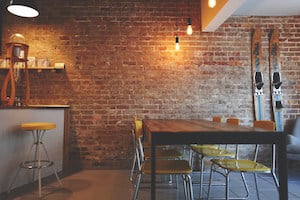
Essential Guide to Industrial Style Furniture -Today
Today, the industrial style is all about showcasing the unrefined beauty of mixed materials like wood and metal and embracing a minimalist approach. The no-frills, mechanical look of industrial furniture makes a bold statement while providing hard-wearing functionality.
Industrial style furniture is no longer just salvaged from old factories – it’s now crafted by designers who appreciate the aesthetic and want to bring that raw, utilitarian vibe into modern homes. This furniture style does more than add character; it tells a story of a time when durability was king, and it continues to celebrate that legacy in living spaces across the world.
For those intrigued by the Industrial Revolution’s lasting impact or simply in love with the simplicity and robustness of industrial style furniture, the journey of this design trend is a testament to enduring quality and timeless appeal. It’s functional, it’s stylish, and it’s here to stay – a true homage to the era that changed the world and left us with a furniture style that continues to inspire.
Materials and Design Characteristics
When diving into the world of industrial furniture, the devil really is in the details. Materials and designs are the heart and soul of these pieces. They don’t just tell a story of form meets function; they show it in every screw, weld, and saw mark.
For starters, it’s hard to think about industrial furniture without picturing steel. Galvanized, stainless, or powder-coated – steel provides the sturdy backbone for many industrial designs. Its ability to take on a weathered look with age or remain shiny and polished allows for versatility within the industrial aesthetic.
Then there’s the wood. Reclaimed lumber is a fan favorite, with histories etched into every groove and grain – whether it once was part of a barn, a warehouse, or even old bowling alleys. For industrial design aficionados, the more narrative and character, the better. The wood brings a warm balance to the coolness of the metal, giving pieces like dining tables, bookcases, and desks a signature industrial stamp.
Now, let’s chat about the signature shapes and forms that make industrial furniture instantly recognizable. Think of clean lines and practical construction. Heavy-duty shelves with iron brackets are iconic, as are rolling cart coffee tables with visible casters – reminiscent of the machinery once rolled across factory floors.
Design-wise, the influence of yesteryear’s industries is undisputed. Gears, rivets, and pipes not only serve as functional elements but also as decorative nods to machinery and engineering. Adjustable height mechanisms – like those in drafting tables and stools – borrow directly from the industrial era, where flexibility and adaptability were key.
Looking Forward To The Future
But don’t be fooled into thinking industrial design is all about recreating the past. Modern industrial pieces mix materials like glass and concrete into the design for a contemporary twist. A chunky, reclaimed wood table supported by a sleek metal base, or shelves with a concrete frame, are perfect examples of how the old and new coalesce in today’s industrial offerings.
Finishes are also important. Rather than hide the imperfections or the signs of handcraftsmanship, industrial design highlights them. For example, a table might sport a tabletop with a clear finish to showcase the history of the wood, or metal elements might be deliberately left unrefined to emphasize their raw beauty.
Lighting should not be forgotten when thinking about industrial design. Metal pendant lights, floor lamps with exposed bulbs, and wall sconces using materials like copper or brass, provide not just illumination but also contribute to the overall industrious ambiance.
In the realm of seating, durability and straightforwardness reign. Metal stools or chairs with leather cushions reflect the utility and no-frills approach of industrial sensibilities. Even in upholstery, leather is often the material of choice, with its ability to age gracefully and resist wear and tear – just like the furnishings it compliments.
In sum, industrial furniture is a striking blend of hardworking materials – steel, wood, leather – and utilitarian design that echoes the mechanical age. It continues to push the envelope of design innovations while honoring its robust, unpretentious roots. Whether within the walls of a loft or adding edge to a traditional home, these materials and designs are defining attributes of the treasured industrial style.

Integrating Industrial Furniture into Home Decor
Embracing the Sturdy Elegance of Industrial Chic Across Home Decor Styles
Venturing into the realm of home design can feel like navigating a vast sea of possibilities, but one aesthetic that has steadfastly anchored itself in the hearts of decor enthusiasts is the robust charm of industrial furniture. What began as a practical, workhorse design story rooted in factories and workshops has evolved into a vogue statement that adapts fluidly across different home styles.
Blending Industrial with Modern Minimalism
The clean lines and minimalist ethos of modern homes can benefit dramatically from the grounding presence of industrial pieces. Imagine sleek, white spaces accentuated with a rugged, iron-framed coffee table or a bold lighting fixture suspended overhead with caged bulbs. These sturdy elements become the focal points, adding depth and a narrative edge to an otherwise understated space.
Rustic Meets Refined
For those who adore the warmth of a rustic setup, industrial furniture can complement the aesthetic without overwhelming it. A dining table pairing reclaimed wood with a steel base can marry the outdoorsy feel of a log cabin with the practicality of industry. The beauty resides in the contrast—a celebration of both nature and human ingenuity in one harmonious setting.
Cozying up the Industrial Edge
One might think that the hard lines and metallic sheen of industrial furniture would be out of place in a cozy, traditional home, but it’s quite the opposite. Introducing industrial elements can enhance the inviting atmosphere. A plush, tufted sofa flanked by metal side tables, or a classic wingback chair paired with an industrial floor lamp, can create a space that feels both welcoming and stylish.
Industrial in Eclectic Enclaves
Eclectic homes that house a curated mix of different styles provide a thrilling playground for industrial furniture. It’s in these environments that the versatility of industrial pieces really shines. A storage cabinet made from metal lockers, for example, can become an eccentric and eye-catching bookcase. The contrasting textures and eras can ignite an electrifying aesthetic tension that makes the room pop.
Coastal Contrasts
Even homes inspired by the breeziness of coastal living can harness the rugged sophistication of industrial furniture. A weathered, driftwood-inspired table with a metallic base can underscore the seaside theme while anchoring the space in something more substantial. Metal pendant lights or a bar cart with wheels can subtly introduce industrial vibes without detracting from the beachy feel.
Modernizing: Essential Guide to Industrial Style Furniture
Maximizing Small Spaces
Say goodbye to the misconception that industrial furniture is only for lofty spaces. Compact living areas can reap the benefits of this style’s focus on functionality and open design. A glass-topped table with a slender metal frame can maximize the feeling of space while maintaining that chic, factory-inspired look.
Smart Industrial Accents
Not every home can handle a full-on industrial overhaul, and that’s perfectly fine. Smaller doses of industrial flair in the form of accent pieces—a wireframe shelving unit, metal stools, or an industrial-style mirror—can provide texture and visual interest without committing to a full theme change. These small updates can inject personality and reflect a homeowner’s unique style narrative.
Combining Light and Shadow
Lastly, let’s not forget the impactful role lighting plays in uniting industrial furniture with various home styles. Strategic placement of pendant lights with industrial bent or articulating wall sconces can spotlight areas of interest, create ambiance, and blend the old with the new in a dance of light and shadow.
In weaving industrial furniture into different homes, the guiding thread is balance. Whether it’s providing a grounding force in a minimalist room, a nod to craftsmanship in a rural setting, or a dash of historical depth in a modern abode, the industrial style has the dexterity to dovetail seamlessly with any decor. The journey from warehouse floors to cozy nooks in homes worldwide speaks volumes of its adaptability, ensuring that this once-utilitarian style continues to reinvent itself within the ever-evolving tapestry of home design.

DIY Projects and Upcycling Ideas
Ready to channel your inner craftsman and create some awe-inspiring industrial furniture? Within this essential guide to industrial style furniture is no secret that making your pieces brings an unparalleled level of satisfaction. Imagine sitting back and enjoying a cup of coffee at a table forged from your own hands. Let’s dive into some enthralling and manageable DIY projects that will electrify your living space with an authentic industrial vibe.
First on the agenda is building a solid pipe-based bookshelf – a centerpiece that will not only hold your treasured books but also showcase your skill. Begin with steel pipes, getting them cut and threaded at your local hardware store. Embrace reclaimed wood shelves to add history and charm, ensuring each plank is sanded and sealed. Affix the pipes to the wall and slide the wood in place, and voilà! You’ve got a conversation starter that’s both sturdy and stylish.
Got a penchant for lights? Everyone knows how pivotal good lighting is for that quintessential industrial atmosphere. You can craft a chic pendant lamp using a simple light socket, a wire, and a metal cage. Loop in an Edison bulb to cement that vintage industrial look. It’s a minimalist approach but with maximum effect, perfect for hanging above a dining corner or workspace.
Hungry for more? How about a robust dinner table with a metal base? Welding skills are a plus here, but you can also assemble pre-cut metal frames from a metalworker. Top it off with a slab of aged wood – the more nicks and scratches, the better. Seal it well, and you’ve got a durable, functional table that’s sure to withstand the test of time and become the heart of many gatherings.
Want something a bit more relaxed? An industrial-inspired coffee table might be your next project. Employ a set of old metal wheels for a base and attach a wooden crate flush with the character. This inventive piece will be rolling with stories and serve as a practical, movable focal point for any room.
For those few random bits and bobs, why not fashion a set of floating shelves? Short steel pipes, floor flanges, and sturdy wood will do the trick. Assemble a framework on your wall and have the shelves hover gracefully, offering that clean look while keeping your space decluttered.
Remember, each scratch, weld, or grain in the wood tells a story – your story. And the surefire way to add authenticity to your space? It’s by accentuating those features, not hiding them. There’s a simple joy in creating industrial furniture, a process that blends raw materials and imagination, resulting in pieces that aren’t just functional but also embody the spirit of resilience and creativity.
Maintenance and Care for Industrial Furniture
Essential Guide to Industrial Style Furniture- Maintenance and Care To Ensure Longevity
Industrial style furniture combines both an edgy design aesthetic and practical functionality, making it a favorite for those who appreciate its historical roots and distinctive look. To keep these pieces looking their best over the years, here’s a guide to ensuring the longevity of your treasured industrial furniture items.
First up, let’s talk about protecting their surfaces. Metal parts, often a staple in industrial furniture, can be prone to rust if not cared for properly. A simple routine of wiping them down with a clean, dry cloth will prevent dust and moisture build-up. If the metal already shows signs of rust, a targeted approach using a mixture of vinegar and baking soda can help remove it. Always finish by applying a protective layer, such as a wax or sealant specifically designed for metal, to ward off further corrosion.
For wood elements, which add warmth and history to industrial pieces, the key is to maintain their moisture balance. Avoiding extreme temperatures and humidity levels can prevent the wood from warping or cracking. Use specialized wood cleaners to rid the surface of dirt and grime without stripping away its natural oils. If the wood feels dry to the touch, an application of furniture oil or wax will help rejuvenate its appearance.
Don’t overlook the unique combination of glass or concrete that might be featured in your industrial furniture. Glass should be kept clean with a simple solution of water and vinegar. Avoid harsh chemicals that can damage any special coatings. Concrete, on the other hand, may require sealants to keep it looking fresh and to prevent stains.
Moving on to the care of upholstery, which might accompany your industrial chairs or couches, regular vacuuming will keep the fabric free of dust and debris. For tougher stains, consult manufacturer instructions, as different materials will require different cleaning agents. Remember, prompt attention to spills can be the difference between a simple clean-up and a stubborn stain.
Assembly hardware, such as screws and bolts, should remain tight to keep furniture sturdy and functional. Over time, these can loosen, so regularly check and tighten them if needed. This process not only ensures safety but also helps retain the shape and structural integrity of your furniture.
Lastly, the importance of careful positioning in your space can’t be overstated. Position industrial furniture away from direct sunlight, which can fade and deteriorate the materials over time. If the piece has casters or wheels, make sure they’re clean and roll smoothly to prevent damage to both the furniture and your floors.
Conclusion
We hope you found this article for the essential guide to industrial style furniture to be both informative and interesting. Take these tips to heart, and your industrial style furniture will stand tall and proud, echoing the enduring legacy of its design. Whether it’s a sturdy metal-framed table or a sleek concrete bench, remember that the beauty of industrial furniture is in its blend of form, function, and history – and with the right care, it will continue to make a statement in your space for years to come.
Embracing the industrial style in home furniture speaks to a broader narrative of repurposing and renewal, a symphony of function and minimalism that transcends time. Whether through the incorporation of storied, vintage pieces or the crafting of new ones with the soul of the old, this style offers a robust dialogue between past and present. By understanding the roots, materiality, and upkeep of industrial furniture, we not only preserve the integrity of our home environments but also contribute to the continuation of a design ethos that honors the raw, candid spirit of innovation. Our foray into the essence of the industrial aesthetic is a celebration of the beauty found in simplicity and strength, a chronicle of furniture that is as enduring as the legacy it carries forward.



